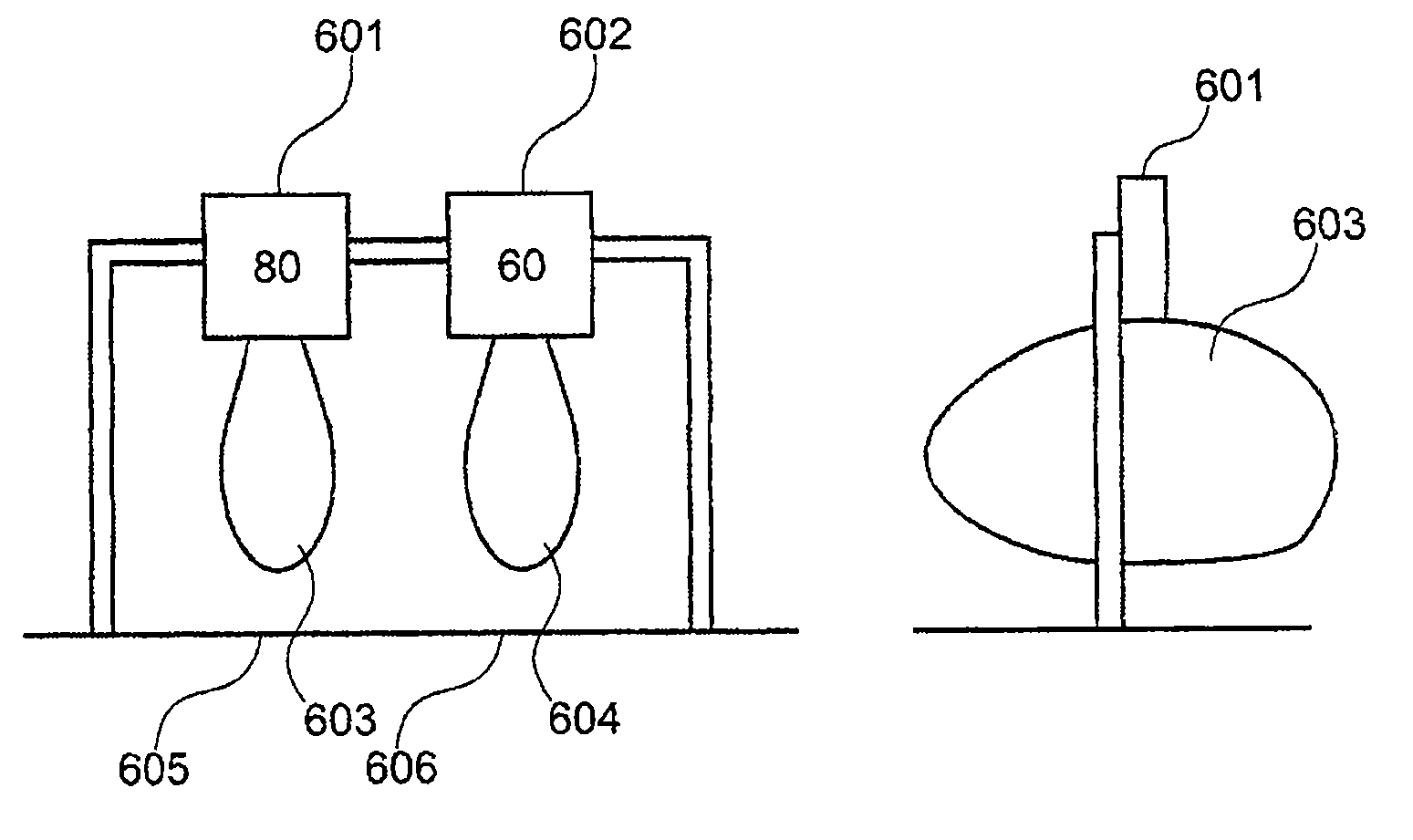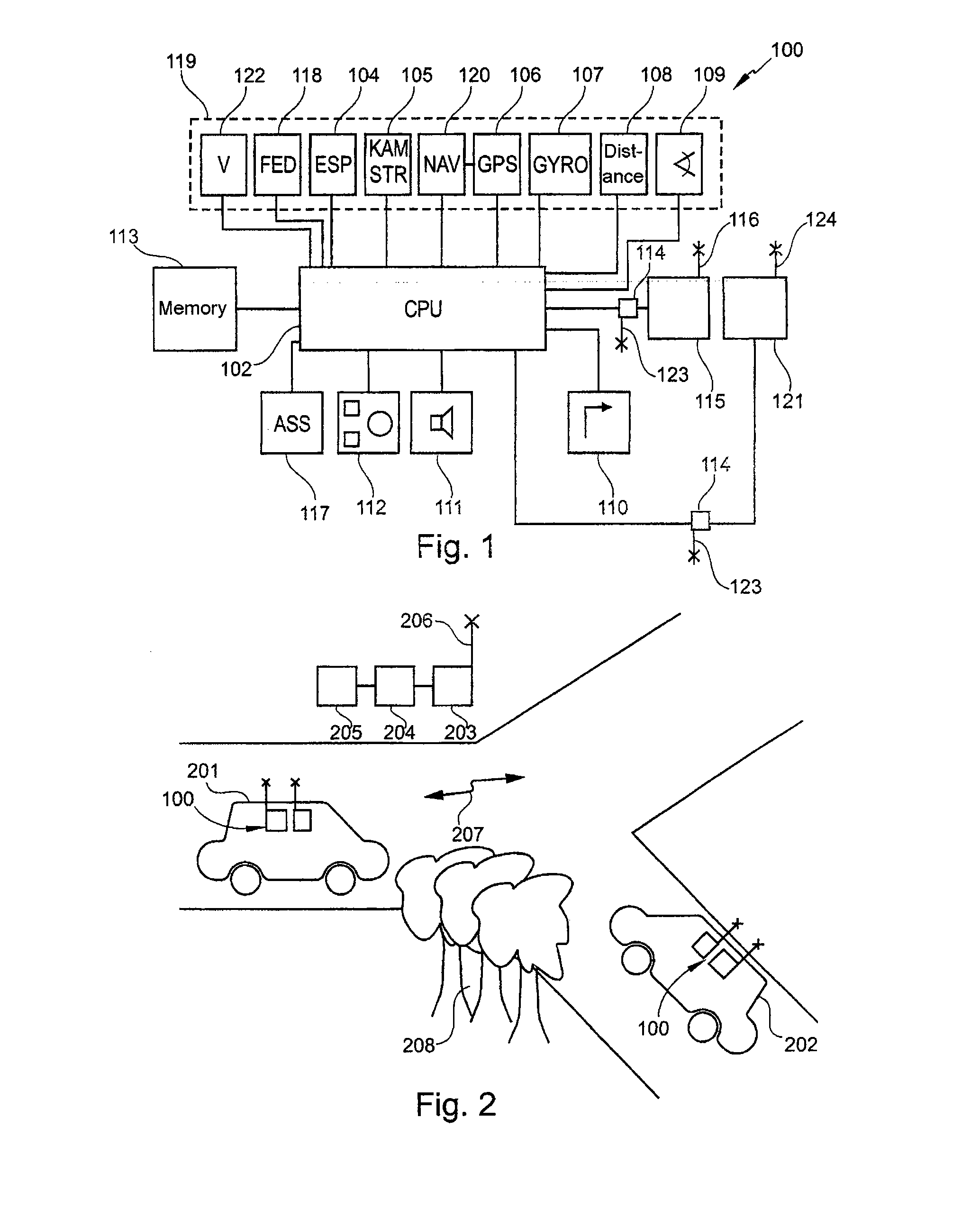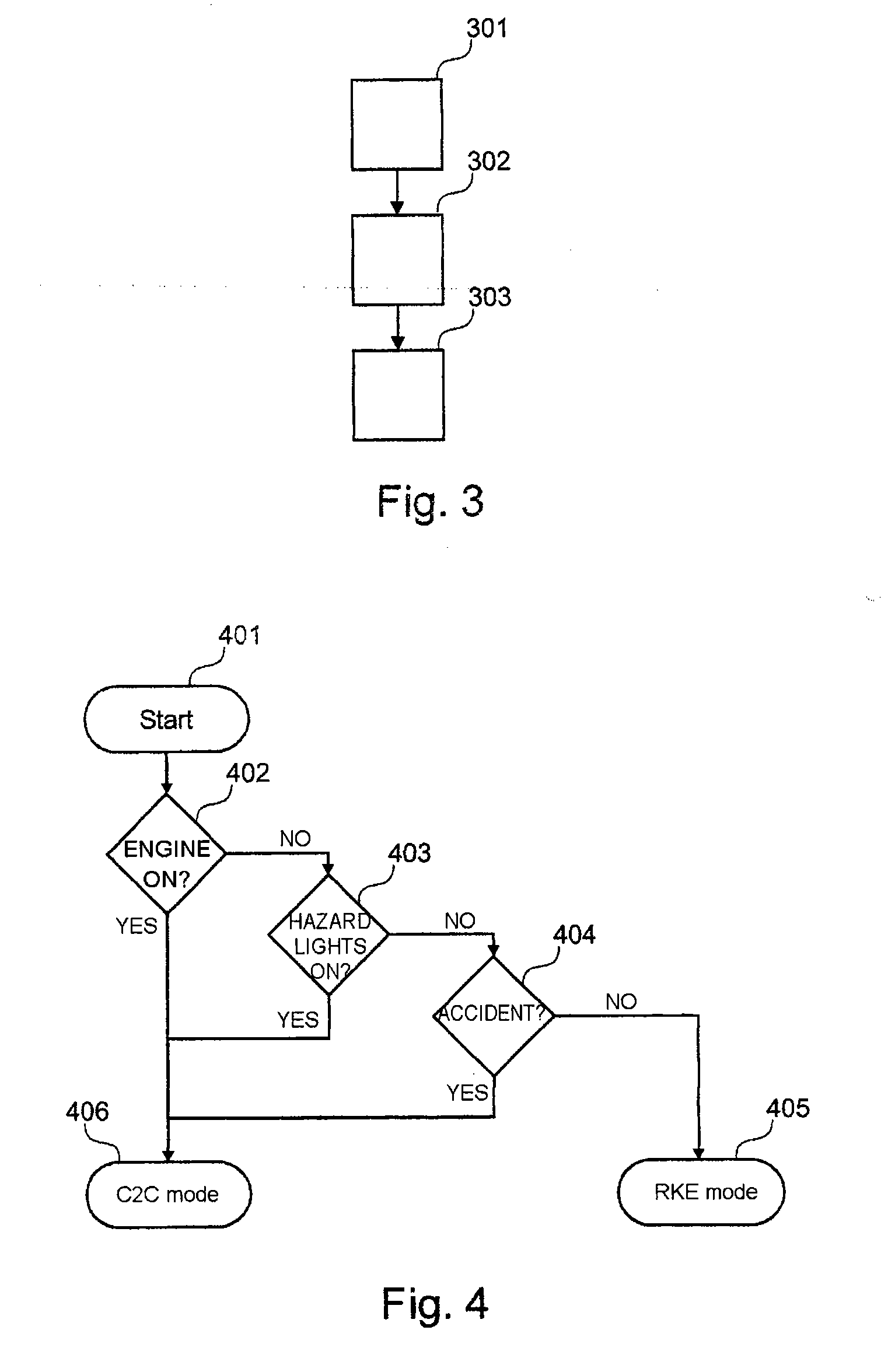Transmission of vehicle-relevent data of a vehicle via mobile communication
a technology of vehicle-relevent data and mobile communication, which is applied in the field of vehicle transmission, can solve the problems of limited junction assistance function of c2x communication, inability to and inability to achieve direct communication between vehicles at a junction. achieve the effect of improving communication between vehicles
- Summary
- Abstract
- Description
- Claims
- Application Information
AI Technical Summary
Benefits of technology
Problems solved by technology
Method used
Image
Examples
first exemplary embodiments
[0087]FIG. 4 and FIG. 5 show flowcharts for methods based on exemplary embodiments of the invention to illustrate the coexistence C2X, RKE or the use of two communication units.
[0088]The coexistence or the processing of both instances of application (C2X and RKE) as an integration step will first of all be illustrated by way of example with reference to FIG. 4. Following once-only initialization [starting] of the radio communication controller in step 401, the vehicle status is requested [in step 402, a check is performed to determine whether the engine is switched on; in step 403, a check is performed to determine whether the hazard lights are switched on; in step 404, a check is performed to determine whether an accident sensor has responded, that is to say whether an accident has been detected] and then the decision-making is performed for the respective mode [C2C mode, RKE mode]. If one of these questions receives a yes response, the system operates in C2C mode. If all these que...
second exemplary embodiments
[0104]The methods and systems already described can be used to support or extend vehicle-to-vehicle X communication (C2X) by means of the radio technology of wireless access and driving authorization units.
[0105]This involves setting up a radio link at 433 MHz or 800 MHz to 980 MHz (driving authorization communication) in addition to the intended 5.9 GHz (DSRC) in order to use better physical properties of said radio link.
[0106]The second exemplary embodiment described below further improves the invention in the area of prioritization and congestion control.
[0107]To date, it has been proposed that CSMA be used for congestion control in the driving authorization communication. This is now being extended. If communication by means of DSRC already exists in a parameter around the vehicle, driving authorization communication is no longer used for transmission. This ensures that in areas with a relatively large density of vehicles the low frequency is not overloaded and is free for other...
third exemplary embodiments
[0122]Wired information transmission is increasingly on the decline. Today, computers are typically connected to a network by means of WLAN and information / emails / . . . arrive on cell phones (e.g. Blackberry) by means of cellular radio. Only cars have withstood this trend to date in the wider field. A lot of information is now communicated to the driver exclusively by signs. In the best case, these signs are in the form of changing signs. Even paying for multistory car parks, for example, works only rarely by radio and then by means of proprietary solutions which result in a large number of communication boxes on the dashboards of frequent travelers.
[0123]In line with these exemplary embodiments, wireless access and driving authorization units (ignition keys) which operate at 433 MHz (ISM band), or between 800 and 980 MHz, are used as the only wireless form of communication. These units installed in the vehicle may attain a range of up to 1000 m (without obstacles) and, on account ...
PUM
 Login to View More
Login to View More Abstract
Description
Claims
Application Information
 Login to View More
Login to View More - R&D
- Intellectual Property
- Life Sciences
- Materials
- Tech Scout
- Unparalleled Data Quality
- Higher Quality Content
- 60% Fewer Hallucinations
Browse by: Latest US Patents, China's latest patents, Technical Efficacy Thesaurus, Application Domain, Technology Topic, Popular Technical Reports.
© 2025 PatSnap. All rights reserved.Legal|Privacy policy|Modern Slavery Act Transparency Statement|Sitemap|About US| Contact US: help@patsnap.com



